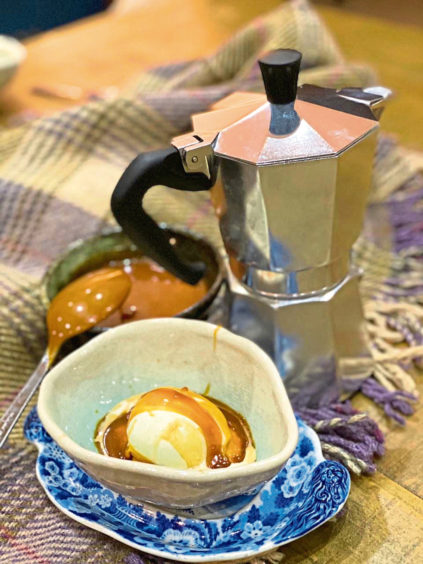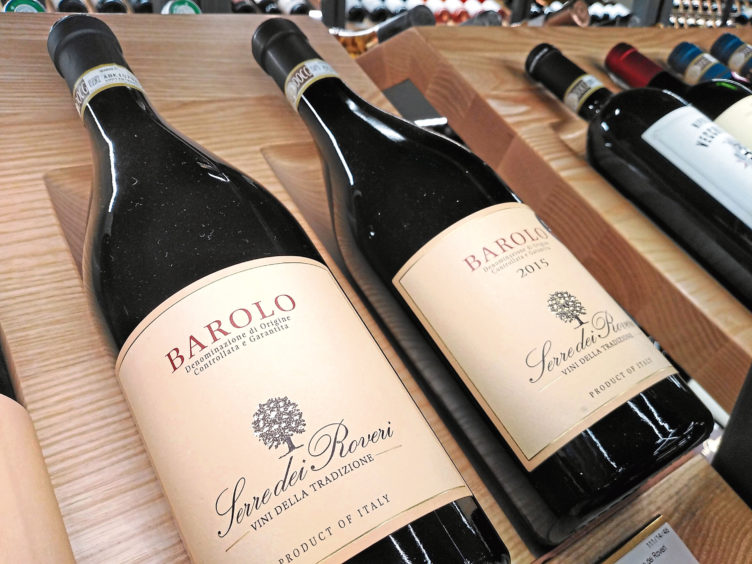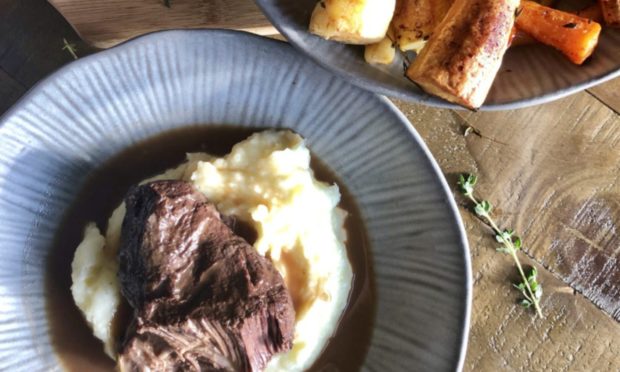Catherine Devaney is a food and drink writer who contributes regularly to The Press and Journal’s food and drink magazine, The Menu.
Like a hibernating dormouse, I’m very predictable when it comes to food cravings.
The hankering for slow-cooked beef in November, and the comfort of sticky toffee as soon as the autumn leaves begin to fall, is seemingly imprinted in my DNA. Ping, the clocks have changed and there I go, scurrying to the back of the cupboard to dig out the casserole dish.
This week, cravings unleashed, I found myself scrolling back through photographs on my phone to this time last year.
It was rather reassuring to find that my November 2019 was, much like now, an exercise in comfort eating of the highest order. Some things, at least, never change.
As I scrolled I was instantly transported back to place and time, a technicolour muffin-by-muffin account of last autumn, helpfully curated by the smartphone, with no need to dig out an album or try to remember when a photograph was taken.
November
There it was, on November 11, from many different angles, nestled in between photographs of apple trees and kids kicking leaves…meltingly soft beef cheek braised in Barolo, with polenta and lashings of butter and fontina cheese.
Then pudding the sticky toffee, warm and devilishly sweet, smothered in the glossiest butterscotch whisky sauce on November 30 for St Andrew’s Day. A reminder, as if I needed one, that it is time.
November is such an in-between month, in what is frankly an in-between sort of year, with autumn on the way out and Christmas still waiting in the wings.

These are uncertain days. There’s a palpable sense of waiting for something to change.
And, if you’re anything like me, you’re still doing a mental re-calculation every time you look at the kitchen clock (it’s such a faff to take it off the wall that no one has found the time to wind it back an hour).
It’s time to light a candle in the darkness, invest a little extra time in food that warms from the inside out, hunker down and re-charge.
Brisket
Beef braised in red wine…although it sounds so much better in Italian, Brasato al Barolo.
People often assume there is some kind of skilful mysticism to braising beef but there’s really only one thing to remember: keep the temperature low and slow. Be patient. The other aspect, of course, is the cut. This is where it really pays to talk to a butcher.
Play supermarket shelf roulette at your peril, trust me, it’s not worth the red wine. Good brisket is a rich, fat-marbled cut that responds fantastically to slow cooking.
The long cooking time needed to gently melt down the connective tissue assures an exponential reward in flavour. However, if you’ve never tried beef cheek before, then I suggest you start.
With the right cooking it yields the most meltingly tender beef and incredible flavour (and you can ask your butcher to trim and remove the sinew from the cheeks for you to make the preparation easier). For me, nothing heralds the start of winter more than this. And simply nothing compares to the incredible smell in the kitchen, the culinary signature of a winter’s day.
Recipe
Here’s how to achieve melt in the mouth results. Pour a glug of vegetable oil into a large oven proof pot (a cast iron casserole dish with a lid is ideal) and place on a high heat.
Season the beef cheeks with salt and pepper then place them in the pan and sear until well browned on both sides – don’t rush this step – then remove them and put to one side.
Next add four shallots, thinly sliced, four cloves of garlic, two carrots (thinly sliced), a stick of celery (sliced), one bay leaf and a sprig of fresh rosemary. Let the vegetables colour, add back the beef, then pour in a very large glass of red wine – be generous.
Traditional recipes call for Barolo. Made from the Nebbiolo grape, it’s a delicious wine with a dark, earthy black fruit core.
The downside is that it can be expensive and you probably want to save it for drinking with the finished dish, so really any red wine from the Piedmont region of Italy will do the job.

Let the wine bubble then add a litre of fresh beef stock.
Here it pays dividends to use homemade stock or to ask your butcher if he can give you good beef stock, or veal stock. Stock cubes will affect the flavour and won’t give the sauce the same body and richness.
If you don’t have fresh stock, simply use more red wine instead – traditional recipes for this dish don’t use stock anyway.
Bring it back to the boil then cover with tin foil and put the lid on.
Put the pot in the oven at 140C/Fan 120C/320F/Gas Mark 2.5 for four and a half hours or until the cheeks are meltingly tender when you insert a skewer.
If there’s the slightest resistance, just re-cover and put them back in the oven for a bit longer. When they’re ready a skewer should slide in like butter.
Lift out the cheeks with a slotted spoon (be gentle as they will now be so tender they will easily break apart) and set aside.
Sauce
Now, to finish the sauce, my inclination would be to strain off the vegetables and put the liquid back on a high heat to reduce and thicken slightly.
However, traditional recipes for Brasato al Barolo call for a more rustic approach, advocating blitzing it with a hand blender to use the vegetables to create a thickened sauce. Both are delicious.
Serve with creamy buttery mashed potatoes, with the addition of a little truffle oil or parmesan for sheer luxury. This dish almost needs no other accompaniment, but you could add some parsnips and baby carrots, roasted whole with honey and thyme.
This is such a rich dish it’s probably too much to add sticky toffee pudding in the same sitting but if, like me, you can’t resist, try a scoop of vanilla ice cream with some hot toffee sauce and an espresso poured over the top, affogato style.
To make a sticky toffee sauce, heat 115g double cream and 75g unsalted butter in a small pot and set aside, until the butter is melted and the mixture is smooth, then remove from the heat.
Put 150g sugar in a separate pot and place on a medium heat. Let the sugar caramelise, swirling very gently as it melts (do not stir!) until it is a deep golden colour then take it off the heat.
Add the hot cream and butter to the finished caramel (take care as it will spit at you!) and whisk to make a glossy sauce. Finally add a few flakes of sea salt and a generous pour of the best whisky you can find, then whisk to combine.
You can make this sauce in advance. It will set and thicken but simply re-heat in the microwave and stir before serving.
This is food for cold days, dark days and staying at home days. It whispers winter and it wraps you up in the season. Sometimes home really is the best place to be.
And perhaps I’ll even change that kitchen clock.
More in this series:

